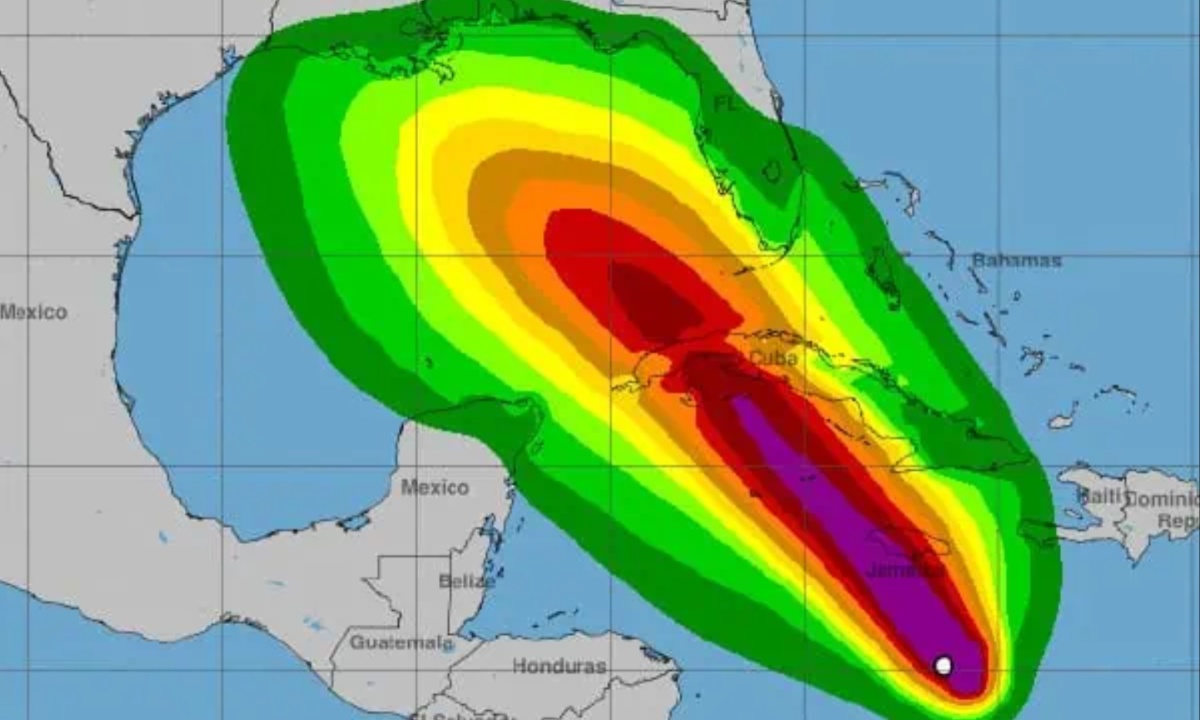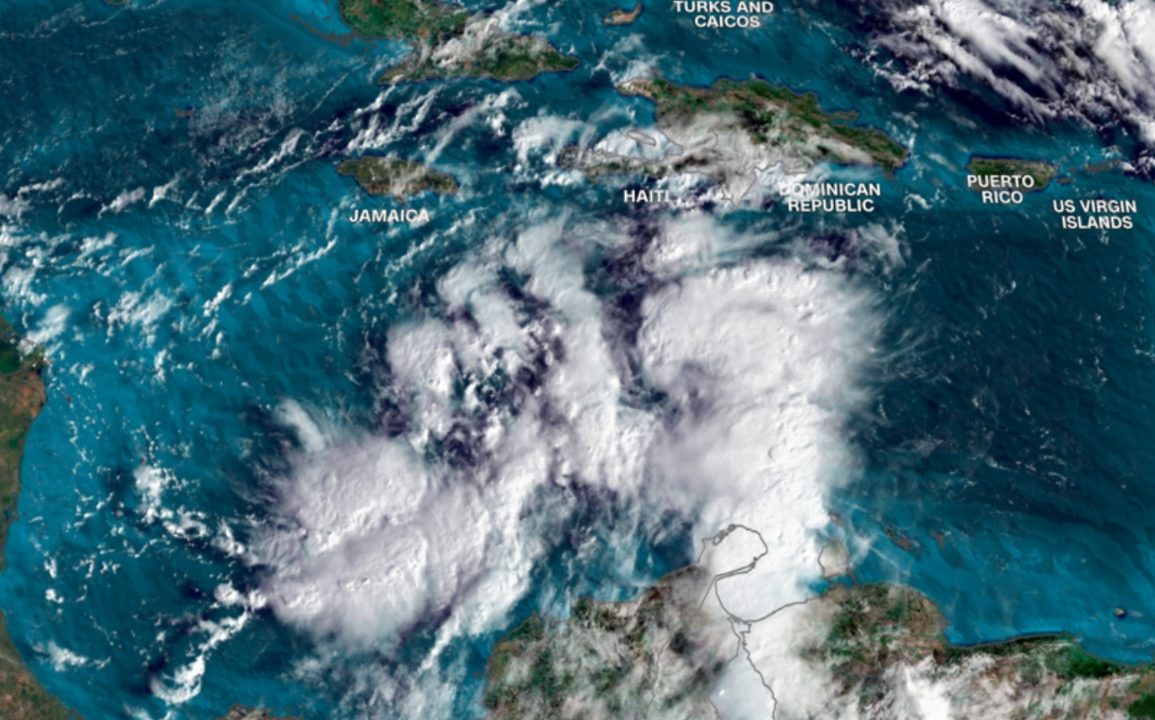Tropical Storm Rafael is rapidly intensifying and is likely to become a hurricane as it approaches the Caribbean. Initially classified as Tropical Depression Eighteen by the National Hurricane Center (NHC), the system strengthened significantly over the past few days.
The NHC indicated that Rafael has developed a well-defined center of circulation and increased wind speeds, leading to its designation as a tropical storm on Monday. Favorable atmospheric and oceanic conditions are contributing to the storm’s ongoing development, raising concerns about its potential impact on nearby regions.
Currently, Rafael is located around 100 miles southwest of Kingston, Jamaica, moving northwest at 13 mph. With maximum sustained winds reaching 60 mph, the storm is expected to continue strengthening in the short term. Jamaica is forecasted to experience tropical storm conditions through Tuesday afternoon, which could result in significant rainfall, strong winds, and dangerous storm surges. In response to the storm’s threats, the NHC has issued multiple tropical weather alerts across the Caribbean and southeastern U.S.

To ensure public safety, various weather alerts have been activated. A Tropical Storm Watch is in effect for the lower and middle Florida Keys, including Key West and Dry Tortugas. Meanwhile, a Tropical Storm Warning has been issued for Jamaica and specific Cuban provinces, while Hurricane Warnings are in place for the Cayman Islands and several western Cuban provinces. These warnings highlight the serious nature of the threats posed by Rafael as it moves closer to land.
The NHC’s forecast predicts that Rafael will continue on a northwestward path over the next few days, with expected movements near Jamaica on Tuesday morning, the Cayman Islands by Tuesday night, and western Cuba on Wednesday. However, uncertainty exists about the storm’s trajectory and intensity after it enters the Gulf of Mexico. This has raised concerns among residents along the U.S. Gulf Coast, who are urged to remain vigilant and monitor updates regarding the storm’s progress.
Residents in potentially affected areas should stay informed through regular updates from the NHC. The organization has cautioned that it is too early to assess the specific impacts Rafael might have on the northern Gulf Coast. As the situation evolves, timely information will be crucial for ensuring public safety and preparedness in the face of this developing storm.

